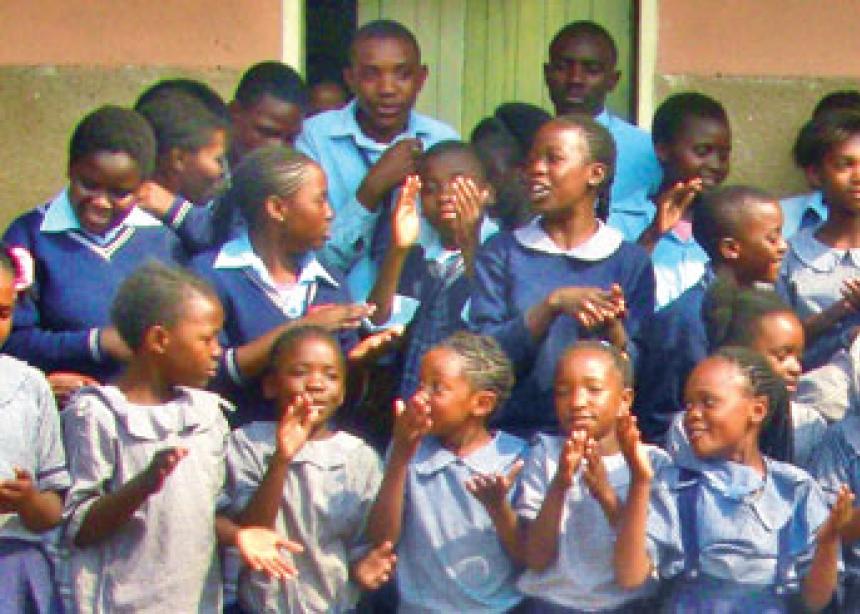As a Mennonite, peace is a part of my everyday vocabulary.
I know it is a good thing—Jesus is the Prince of Peace after all—and I know that peace is found in right relationships, justice and grace. But what does peace look like, exactly?
I grew up in a home where we understood that peace is foundational to the Christian faith and to living rightly. I’ve advocated for it from elementary school to university, but my understanding of what it means to work for peace and what peace looks like have changed over the years. In elementary school, peace was a picture of a white dove and a song about how Jesus loves me. In high school, I contrasted peace with the history of colonization, slavery and the two World Wars.
When I moved to Winnipeg, Man., to attend Canadian Mennonite University, my understanding of peace became more complex. I began to realize that it was not just about wars and doves, but about day-to-day interactions and decisions. Peace became more personal and yet more distant as I learned how encompassing and challenging it was.
When I transferred to the University of British Columbia and began to study international relations, advocating for peace became even more complicated. I was no longer surrounded by students who shared my view that nonviolent action was the obvious and only way to work for peace. Instead, “peacebuilding” became a polarizing and militant concept.
I now find myself an ocean away from those classes, in a place called Lusaka, Zambia. I’m volunteering with an organization called Peace Clubs through the Serving and Learning Together (SALT) Program of Mennonite Central Committee (MCC).
Peace Clubs was started in 2006 by Zambians and Congolese refugees, to help refugees integrate peacefully into Zambian schools. Since then, the clubs have expanded into 16 schools within Lusaka, working to empower young people to nonviolently transform conflicts in their schools, homes and communities, by teaching them skills in nonviolent peacebuilding, conflict transformation and reconciliation.
I am beginning to understand that working for peace is about asking the questions that no one wants to ask. It is about addressing the issues that no one wants to acknowledge. Peace is about moving forward into that “third way” that Jesus calls us to. It is about seeking creative solutions as a community.
Issa Sadi Ebombolo, one of the founders of Peace Clubs, says, “Peace is the transformation of destructive interactions into cooperative and constructive relationships.”
For him, peace looks like a single mother living in poverty who asks her young daughter to draw the water, sweep the house and wash the dishes every morning so that she can leave to sell vegetables in the market. The daughter is late for school every day, and is punished by her teachers. She has no time to study and is failing three subjects.
Then this daughter joins her school’s Peace Club. She learns about nonviolent peacebuilding, and about creatively and constructively resolving conflict.
Armed with these new understandings and skills, the daughter returns home and sits with her mother, telling her of her concerns and her hopes. Her mother begins to also understand; her perspective is transformed. They search for solutions together, seeking that “third option.”
Now the mother gets up a bit earlier to draw the water and sweep the house before leaving for the market, and the daughter is able to finish washing the dishes and still make it to class on time. “This,” says Ebombolo, “is peace.”
And it is. It is a transformation of a dissonant relationship into a harmonious one—destruction into construction.
Maria Krause is a graduate of the University of British Columbia with a bachelor of arts degree in international relations, and a member at Langley Mennonite Fellowship, B.C. After her term in Lusaka, Zambia, ends, she hopes to return to Canada to work on a master’s degree.




Add new comment
Canadian Mennonite invites comments and encourages constructive discussion about our content. Actual full names (first and last) are required. Comments are moderated and may be edited. They will not appear online until approved and will be posted during business hours. Some comments may be reproduced in print.